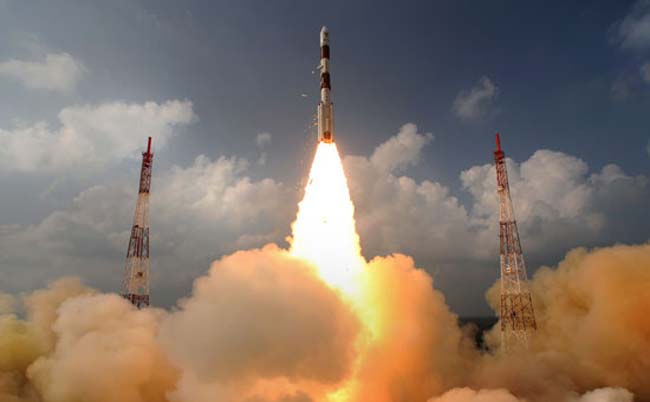In my last post, I talked about the recent Indian mission to Mars called the Mangalyaan which is Mars in the Hindi language. The first Mars probe from India achieved Mars orbit on September 24th of 2014. In the previous post, I mentioned that the Indian probe with much less expensive than the recent MAVEN probe that was launched to Mars by the United States. Today, I am going to go into more detail about how the Indians were able to build such an inexpensive interplanetary probe.
The Mangalyaan was built entirely in India with all components being manufactured there. No money was spent on outsourcing work or purchase of foreign components. The Mangalyaan is very light at around one thousand one hundred pounds. Only one physical model of the Mangalyaan design was built which helped to keep costs down. The Mangalyaan design was refined by extensive computer modelling before the single physical model was built. The cost of the Mangalyaan probe was sixty nine million dollars. This is about one tenths of the cost of the U.S. MAVEN Mars probe.
The Mangalyaan probe took over ten months to travel the four hundred and fourteen million mile journey. The probe carries five scientific instruments. It will orbit Mars and study methane in the Martian atmosphere. It will also study the Martian terrain and search for valuable minerals.
Because Mangalyaan will not land a module on the surface of Mars, it could be lighter and less expensive than some of the recent landers that have been sent to Mars. On the other hand, just because it is lighter and smaller than other probes, it is not able to carry as many scientific instruments that some other Mars probes carries.
There is currently a thriving business in building and/or launching satellites for other countries. Russia has been especially active in the space services business. They currently have the most robust space programs on the planet. The U.S. has had to go to Russia to ferry U.S. astronauts up to the International Space Station. After Russia went into Crimea and relations with the U.S. chilled, there were concerns that U.S. astronauts would not be able to get up to the I.S.S. and get back because the Russians were talking about cutting off access. This situation must have registered with other countries that have used Russian space services. If India can build and successfully launch small satellites, they may become a vendor of choice for other countries that are nervous about Russia intertwining commercial and political cooperation as they have with the U.S. access to the I.S.S.
India is a huge country with a lot of highly capable engineers. They have managed to pull themselves up by their bootstraps and create a growing space program that could contribute to future international trade.
Launch of India's Mangalyaan Mars probe:
